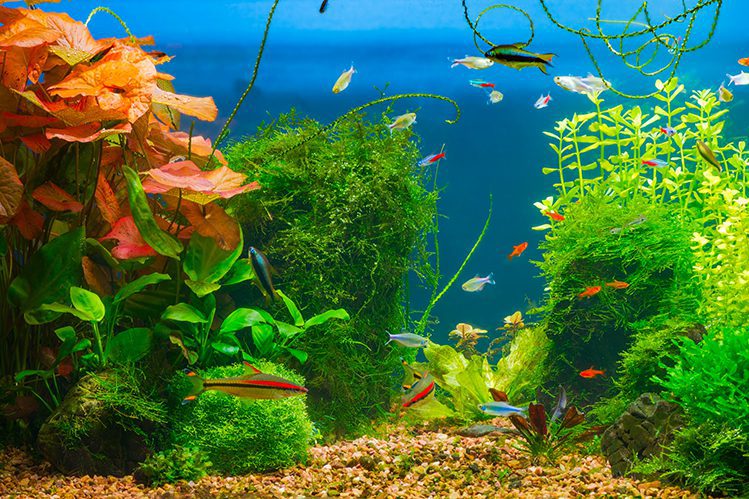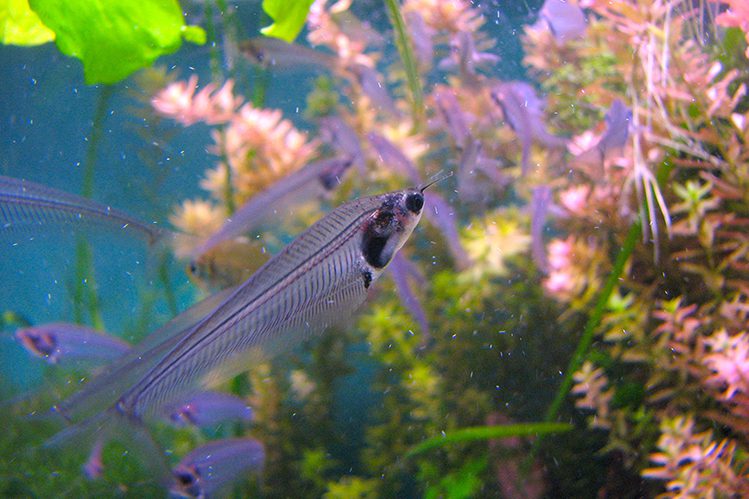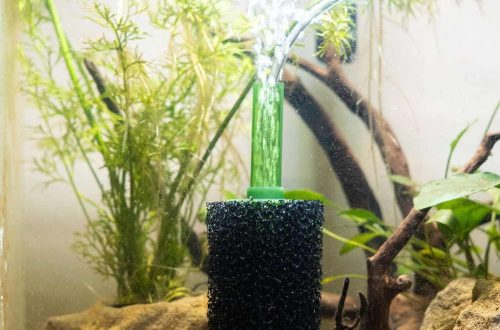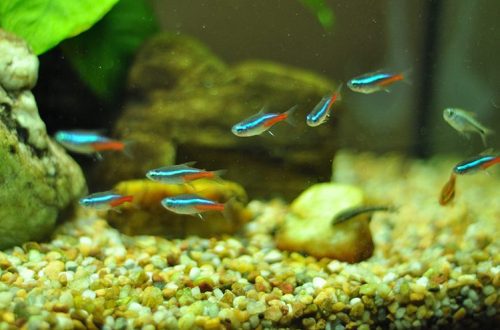
Algae in the aquarium: good or bad?
A beginner aquarist always has a lot of questions. It seems that the more you immerse yourself in the topic, the more of them appear. For example, do you still need algae in an aquarium or not? If so, which ones? And what to do with algae that appear on their own? Let’s dot the “i” in our article!
Contents
Are algae necessary in an aquarium?
To answer this question, let’s clearly define: what is algae?
Many beginners call all the greenery in the aquarium “algae”, but this is not true. “Useful algae”, which are sold in aquarium stores, are essentially not algae, but aquarium plants, the highest representatives of the underwater world.
But what then is called “algae”?
Algae are unicellular, multicellular and colonial organisms that live in the aquatic environment. These are the lowest. In the aquarium, they occur on their own, depending on certain factors, and can be a real problem for both the aquarium inhabitants and the aquarist.
Aquarium plants: why are they?
In an aquarium, plants perform many important functions: they serve as an additional nutrient base, shelter and resting place, promote spawning, saturate the water with oxygen, reduce the amount of nitrogen compounds and prevent the growth of “harmful” algae. Contrary to fears, aquarium plants do not complicate the care of the aquarium, but rather make it easier.
But aquarium plants are not a necessity. To start them or not is the business of the owner. Many people think that aquariums without plants look “bare” and start them not only for fish, but also as decoration.
The main thing is to choose plants that, according to their characteristics, are suitable for your aquarium fish. Be careful: unsuitable plants can lead to poisoning!
For beginners, it is better to start with the most unpretentious plants. These are, for example, duckweed, vallisneria, elodea, hornwort, limnobium and others. The main thing is to choose plants that are right for your aquarium inhabitants.

And what about algae that appear on their own?
Any aquarist (whether beginner or pro) is familiar with the problem of “green water”. The water becomes cloudy and green just because of the algae, and this can happen both in a new and in a long-established aquarium. We wrote about provoking factors in the article “”.
Algae, like plants, are also different. Some of them are safe, while others pose a threat to the life of the inhabitants of the aquarium.
- Brown, silicon protozoan algae
These algae appear in every new aquarium, and they are completely safe. Usually they appear 2-3 days after filling the aquarium with water and disappear on their own as soon as the biological balance in the water is established. Silicon algae settle on aquarium walls, equipment and decorations, but are easily removed with a scraper or sponge.
- Green algae
Safe green algae are like light green threads that can thicken. In small quantities they are safe. However, they must be removed in a timely manner so that they do not multiply, pollute the aquarium and compete with plants for nutrients. They are easy to remove by hand.
- Blue-green algae
Unlike the first two, blue-green algae are dangerous. They should not be in the aquarium, even in a small amount!
Blue-green algae usually appear in a new aquarium with poor water quality (usually an excess of nitrate and phosphate is the problem). They settle on the ground, equipment, decorations and walls of the aquarium as a blue-green or dark brown coating and have a specific smell.
Blue-green algae must be dealt with. And the sooner you start the fight, the easier it will be to get rid of them.
- Red algae
These protozoa are long, dark threads that attach to plant leaves and stems, equipment, and decorations. They form whole groups: brushes, shrubs, etc.
The main danger lies in the rapid spread of red algae. If measures are not taken in a timely manner, red algae will literally flood the entire aquarium and it will be difficult to get rid of them.

How to deal with “harmful” algae?
Algae control must be comprehensive.
Important:
– install the aquarium in the right place,
– control the light regime and water parameters,
– timely change the water,
– clean equipment, ground and scenery,
– maintain a feeding regimen for fish: do not overfeed them!
– plant aquarium plants,
— use professional products to control water parameters (for example, EasyBalance, NitrateMinus Tetra to reduce the level of phosphates and nitrates that serve as food for protozoa) and long-term algae control (Tetra AlguMin, Algetten, AlgoStop depot).
Products for the control of algae growth and fight against them must be used strictly according to the instructions!
One last piece of advice for beginner aquarists: be sure to get the contacts of an experienced aquarist who you can turn to if you have questions. An aquarium is a living organism, the balance of which is very easy to disturb. Experiment and act at random is not worth it!
We wish your aquarium inhabitants to feel good and comfortable in their beautiful water home!





